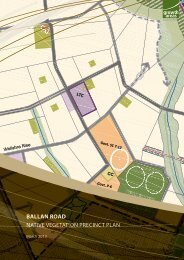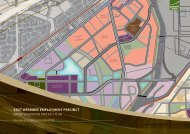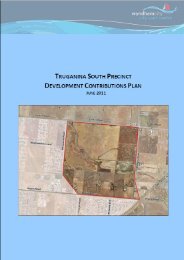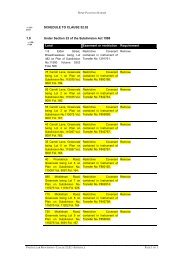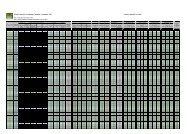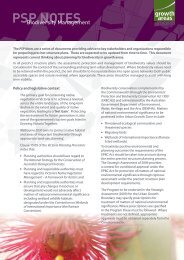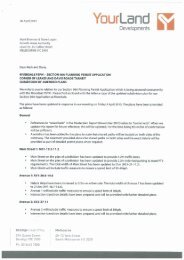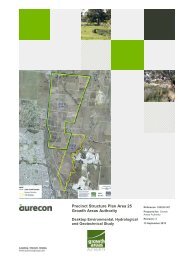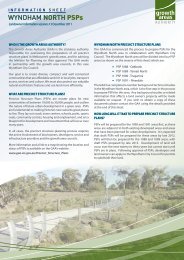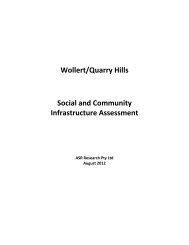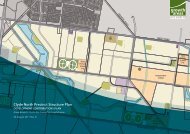Transport Modelling - Growth Areas Authority
Transport Modelling - Growth Areas Authority
Transport Modelling - Growth Areas Authority
You also want an ePaper? Increase the reach of your titles
YUMPU automatically turns print PDFs into web optimized ePapers that Google loves.
Northern <strong>Growth</strong> Corridor <strong>Transport</strong> <strong>Modelling</strong><br />
Number of households<br />
Retail jobs<br />
Total jobs<br />
Primary school enrolments<br />
Secondary school enrolments<br />
As VITM uses a more detailed disaggregation of demographic and employment<br />
data (such as population by age category and number of dependants by age<br />
category) the following set of rules were developed to generate appropriate inputs<br />
for the model:<br />
Persons per household were assumed to be as per VIF2046 projections for<br />
each LGA<br />
Age category splits were assumed to be as per VIF2046 projections for each<br />
LGA<br />
Number of dependents by age category were assumed to be as per VIF2046<br />
projections for each LGA<br />
No tertiary enrolments were assumed in new zones<br />
Zones in the Beveridge area were assumed to take on the characteristics of<br />
the Hume LGA<br />
For existing zones, the land use inputs were taken from the VIF2046 projections<br />
with the following exceptions:<br />
Sunbury town centre employment was specified by HCC at 8,866 total jobs<br />
Broadmeadows activity centre employment was specified by HCC at 8,490<br />
total jobs<br />
Epping central employment and population was specified by CoW in the form<br />
of the Epping Central Structure Plan Precincts<br />
Wandong overall growth projections are consistent with forecasts produced by<br />
id for the Shire of Mitchell.<br />
A summary of the 2046 land use inputs compared against the 2011 inputs is<br />
shown in Table 1. There are no figures included for Mitchell in 2011 as Wallan and<br />
areas to the north were outside of the 2011 VITM study area. The ‘Wallan-Kilmore<br />
Bypass Study, 2007’ indicates that the population of the region containing Wallan,<br />
Wandong and Kilmore was 14,758 in 2006. This is less than one tenth of the 2046<br />
projection.<br />
Maps of the assumed number of households and employment for each of the new<br />
zones is shown in Appendix A.<br />
PAGE ix




